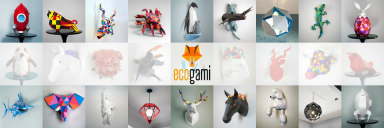Glass Flowers at Harvard
Truth be told, I love glass art as much as paper art. When having dinner recently at the wonderful Lily Bistro [edit: now closed] in Rockland, Maine, I couldn't keep my eyes off this chandelier. So unique!

Later during the same trip, I was excited to visit the Harvard Museum of Natural History because I'd read about the incredible glass flower exhibit. Here are two examples of Mountain Laurel - I can't get over the fine detail, and in person it's even more spectacular. It's hard to believe the models on display aren't real plants.


The collection contains 847 species and more than 3000 models created by German glass artisans Leopold Blaschka and his son, Rudolph, over a span of five decades beginning in 1886. They were commissioned by a professor who wanted life-like representations of plants for the purpose of teaching botany. The life-size models are remarkably accurate and replaced the crude paper mache and wax models that were available up until that time.

The Blaschkas used lampworking, a type of glassblowing that uses a torch to melt clear and colored glass rods. When the rods are in a molten state, they're formed by blowing and shaping with tools and hand movements. Although the plants are composed almost entirely of glass, small amounts of copper wire, animal glue, oil paints, and yes... paper were used to create the structures.

Later during the same trip, I was excited to visit the Harvard Museum of Natural History because I'd read about the incredible glass flower exhibit. Here are two examples of Mountain Laurel - I can't get over the fine detail, and in person it's even more spectacular. It's hard to believe the models on display aren't real plants.


The collection contains 847 species and more than 3000 models created by German glass artisans Leopold Blaschka and his son, Rudolph, over a span of five decades beginning in 1886. They were commissioned by a professor who wanted life-like representations of plants for the purpose of teaching botany. The life-size models are remarkably accurate and replaced the crude paper mache and wax models that were available up until that time.

The Blaschkas used lampworking, a type of glassblowing that uses a torch to melt clear and colored glass rods. When the rods are in a molten state, they're formed by blowing and shaping with tools and hand movements. Although the plants are composed almost entirely of glass, small amounts of copper wire, animal glue, oil paints, and yes... paper were used to create the structures.

I must agree -- that's a pretty light fixture!
ReplyDelete